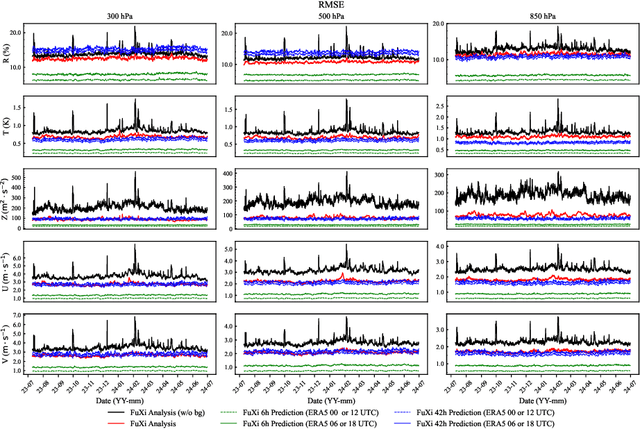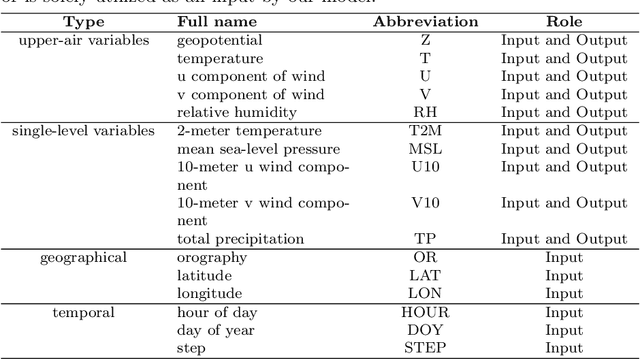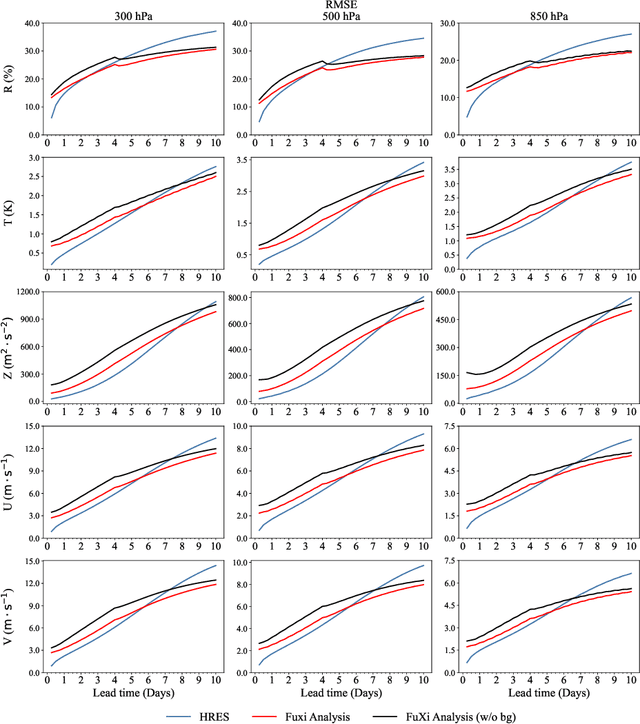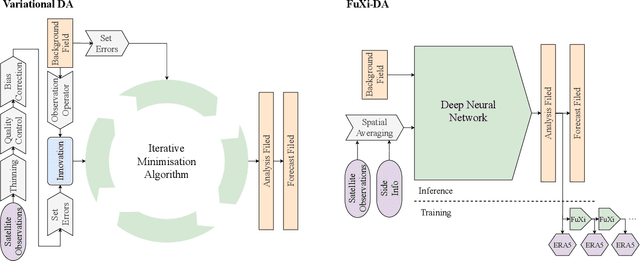Xiaoze Xu
FuXi Weather: An end-to-end machine learning weather data assimilation and forecasting system
Aug 10, 2024



Abstract:Operational numerical weather prediction systems consist of three fundamental components: the global observing system for data collection, data assimilation for generating initial conditions, and the forecasting model to predict future weather conditions. While NWP have undergone a quiet revolution, with forecast skills progressively improving over the past few decades, their advancement has slowed due to challenges such as high computational costs and the complexities associated with assimilating an increasing volume of observational data and managing finer spatial grids. Advances in machine learning offer an alternative path towards more efficient and accurate weather forecasts. The rise of machine learning based weather forecasting models has also spurred the development of machine learning based DA models or even purely machine learning based weather forecasting systems. This paper introduces FuXi Weather, an end-to-end machine learning based weather forecasting system. FuXi Weather employs specialized data preprocessing and multi-modal data fusion techniques to integrate information from diverse sources under all-sky conditions, including microwave sounders from 3 polar-orbiting satellites and radio occultation data from Global Navigation Satellite System. Operating on a 6-hourly DA and forecasting cycle, FuXi Weather independently generates robust and accurate 10-day global weather forecasts at a spatial resolution of 0.25\textdegree. It surpasses the European Centre for Medium-range Weather Forecasts high-resolution forecasts in terms of predictability, extending the skillful forecast lead times for several key weather variables such as the geopotential height at 500 hPa from 9.25 days to 9.5 days. The system's high computational efficiency and robust performance, even with limited observations, demonstrates its potential as a promising alternative to traditional NWP systems.
Fuxi-DA: A Generalized Deep Learning Data Assimilation Framework for Assimilating Satellite Observations
Apr 12, 2024



Abstract:Data assimilation (DA), as an indispensable component within contemporary Numerical Weather Prediction (NWP) systems, plays a crucial role in generating the analysis that significantly impacts forecast performance. Nevertheless, the development of an efficient DA system poses significant challenges, particularly in establishing intricate relationships between the background data and the vast amount of multi-source observation data within limited time windows in operational settings. To address these challenges, researchers design complex pre-processing methods for each observation type, leveraging approximate modeling and the power of super-computing clusters to expedite solutions. The emergence of deep learning (DL) models has been a game-changer, offering unified multi-modal modeling, enhanced nonlinear representation capabilities, and superior parallelization. These advantages have spurred efforts to integrate DL models into various domains of weather modeling. Remarkably, DL models have shown promise in matching, even surpassing, the forecast accuracy of leading operational NWP models worldwide. This success motivates the exploration of DL-based DA frameworks tailored for weather forecasting models. In this study, we introduces FuxiDA, a generalized DL-based DA framework for assimilating satellite observations. By assimilating data from Advanced Geosynchronous Radiation Imager (AGRI) aboard Fengyun-4B, FuXi-DA consistently mitigates analysis errors and significantly improves forecast performance. Furthermore, through a series of single-observation experiments, Fuxi-DA has been validated against established atmospheric physics, demonstrating its consistency and reliability.
 Add to Chrome
Add to Chrome Add to Firefox
Add to Firefox Add to Edge
Add to Edge